
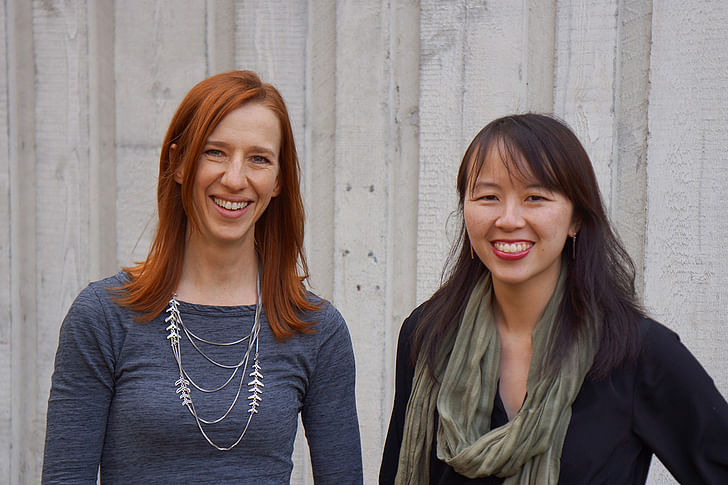
Working out of the Box is a series of features presenting architects who have applied their architecture backgrounds to alternative career paths.
In this installment, we're talking with Microsoft Design Leads Mary-Lynne Williams and Moneta Ho Kushner.
Are you an architect working out of the box? Do you know of someone that has changed careers and has an interesting story to share? If you would like to suggest an (ex-)architect, please send us a message.
Mary-Lynne and Moneta are friends and Design Leads working on Windows at Microsoft, most recently collaborating on Windows 8.1 which launched in October 2013. They first met in New York almost 15 years ago through mutual architecture friends and reunited at Microsoft a decade later.
Archinect: Where did you study architecture?
Mary-Lynne Williams: I did a 5-year undergraduate architecture program at Virginia Tech and participated in their study abroad program in Riva San Vitale, Switzerland.
Moneta Ho Kushner: I did the 5-year undergraduate architecture program at Rensselaer Polytechnic Institute, with a minor in fine arts.
At what point in your life did you decide to pursue architecture?
Moneta: I was pretty obsessed with Legos and building an elaborate Lego society in my parent’s basement.Moneta: I was the geeky kid who liked both art and math, attending art camp during the summers and joined the math team during the school year. My parents steered me towards architecture because it was the perfect combination of both. Also, I was pretty obsessed with Legos and building an elaborate Lego society in my parent’s basement with my younger brother. So building real cities seemed very exciting.
Mary-Lynne: The real inspiration for my early drawings was that I liked imagining living in a bigger house than the one I grew up in.Mary-Lynne: I remember knowing in some sense that I wanted to study architecture as early as the 5th grade. I would draw house plans on graph paper. I didn’t really know about ‘capital A’ architecture magazines back then, but I would buy house plan magazines at the grocery store to learn from. Like Moneta, I was into both art and math, but I think the real inspiration for my early drawings was that I liked imagining living in a bigger house than the one I grew up in.
When did you decide to stop pursuing architecture? Why?
Mary-Lynne: When I was in architecture school, I started doing graphic design and silk-screening. When we had visiting lecturers or art shows, I would design and silkscreen the posters for those. I discovered I was more passionate about that, so I continued to finish my architecture degree but my intent was to become a graphic designer. After designing all those posters, I had a large portfolio to pursue graphic design as a career. I finished my architecture degree and moved to New York where I worked at Aldo Rossi’s office doing architecture and graphic design for him. I also worked in his partner’s design firm (Mahar Adjmi Partners) in that same location. Some of our projects included a magazine featuring Rossi’s work, his portfolio website and Sony’s first consumer electronics website.

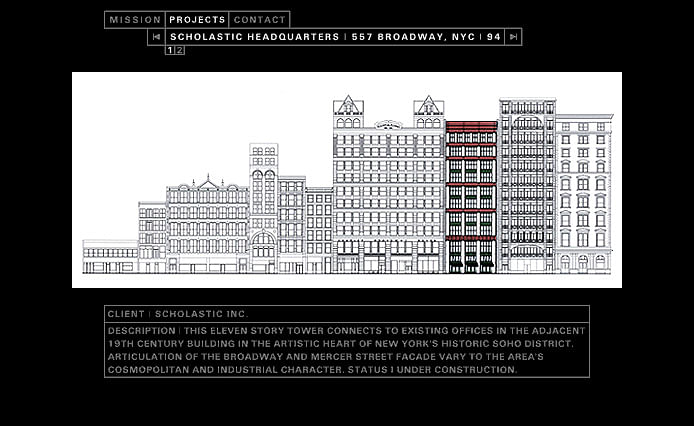
Doing the web design work allowed a nice segue from architecture to interactive design. Including my time at Aldo Rossi’s office, I worked in web design for 13 years. I was most recently in the role of User Experience Director at Razorfish’s New York office until 2008 when I decided to branch out to work in software design, leading me to Microsoft in Seattle.
Moneta: One of my earliest college assignments was to create a poster about a building I admired. I scanned images from library books and composed them together with type in Photoshop 3.0. This was my first design project using a computer, and I became fascinated about how technology could aid design. From that point on, I took electives in computer science, 3D and animation.
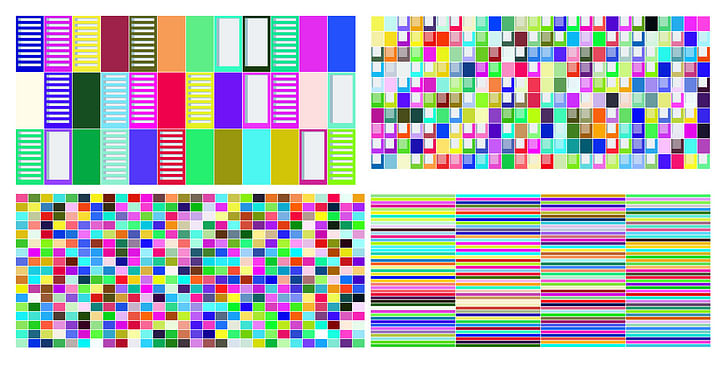
After completing my Bachelors of Architecture, I moved to New York in the late nineties during the height of the first dot-com boom. At the time, few people had formal training in user experience or web design. People with diverse creative backgrounds were defining what web design was and I was eager to be part of it. I worked at the design agency IOMEDIA designing web sites and interactive CDroms. I also worked as a freelance web designer on the side, including working with architect Nader Tehrani on the first web site for Office dA.

Realizing I wanted to commit to interactive design, I went back to school and received a graduate degree at MIT in Comparative Media Studies. For 2 years, I focused on learning as much as I could about interaction, digital and media design. During this time, I interned at the game company Electronic Arts and later got hired by Microsoft as a UX designer upon my graduation. I’ve been here ever since, working on the design of various products including Visual Studio, the Surface table, and now Windows. I’m particularly proud of my work in Windows 8 and 8.1. Our product has a billion users, so it’s exciting to work on something with that kind of impact.
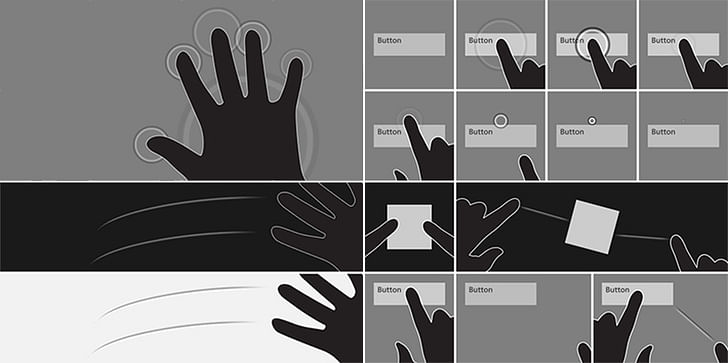
Describe your current profession.
Mary-Lynne: For Windows 8.1, I manage a team of designers that work on the applications that come with Windows, for example: Photo Editor, Alarms, and Reading List. Our design team works together closely with the team that builds the apps. Design activities include things from brainstorming the goals of the apps and its features to designing and prototyping the interactions and visuals. Moneta and I partner on finalizing visuals for all the apps.
Moneta: For Windows 8.1, I manage a team of designers who define the visual look and feel of Windows such as the grid, typography, color, motion, composition and their usage patterns. Our team partners closely on operating system features including the Start screen, personalization and Search, as well as the applications that come with Windows such as Mail, Calendar and the apps Mary-Lynne mentioned above.

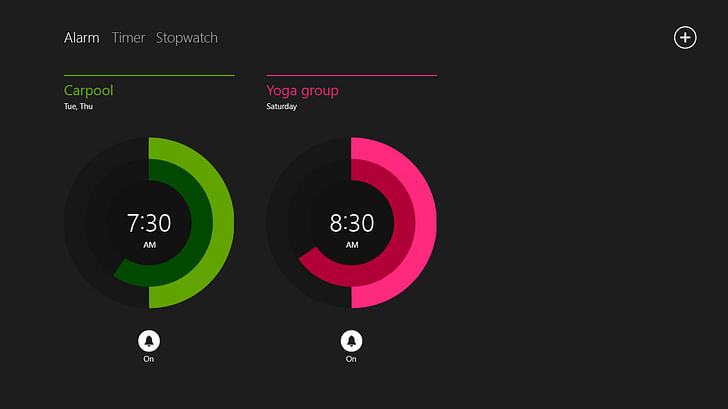


What skills did you gain from architecture school, or working in the architecture industry, that have contributed to your success in your current career?
Mary-Lynne: Almost anything I learned in architecture school could be applied to my current career.Mary-Lynne: Almost anything I learned in architecture school could be applied to my current career. Most good architecture schools are known for teaching students conceptual thinking, spatial awareness and how to take inspiration from all parts of the world, from philosophy, music, film, art, or even something as basic as traffic patterns. I learned a lot about taking a set of requirements for a building and creating an experience for the people that use that building. That experience could consist of any number of decisions: where you put the doorway, how the doorway feels to walk through, how the details of a window and a wall meet, how a wall looks when you approach it, or how a person moves through the various spaces in a building. Digital experiences consist of these same elements, so it has always felt like a natural fit coming from the education I received.
Moneta: Whereas an architect creates the design and plans for a building, we are doing it in the context of software and the Web.Moneta: I agree with Mary-Lynne that almost anything I learned has been applicable. Whereas an architect creates the design and plans for a building, we are doing it in the context of software and the Web. Just like architects, we spend our days brainstorming ideas, sketching, defining flows through spaces (albeit digital), discussing aesthetics and usability and partnering with engineers to implement the designs. Learning about the history of modern design and the Bauhaus movement in architecture school has also been very influential in my visual design work in Windows. By using these same principles from the modernist design movement, Microsoft has been able to pioneer a new design language for software where form follows function and is true to its materials, which is pixels on the screen.
Do you have an interest in returning to architecture?
Mary-Lynne: I expect that the closest I will be to practicing architecture again would be if I decided to build my own house. I still have a lot of friends who are architects, so I get a little taste of it through them. I love being on the cutting edge of interactive design. Things change so briskly in this field, so that will fuel my creative juices for a long time to come.
Moneta: My husband is an architect so I feel like I never left! But seriously, I don’t think I’ll return to it in a professional capacity in the near future but it continues to be an influence and inspiration in my design work.
No Comments
Block this user
Are you sure you want to block this user and hide all related comments throughout the site?
Archinect
This is your first comment on Archinect. Your comment will be visible once approved.